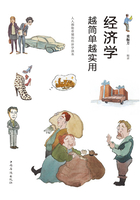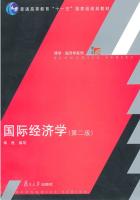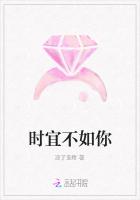The identification of crops which were dominantly intramarginal or dominantly marginal is not difficult. Between these extremes, however, there exist a number of crops which we are not able to identify, in terms of position, with the available information. In general, rice and common crops are intramarginal. "Common" crops are those which have been commonly grown under a free-market.[1] If we are to single out one of these as clearly intramarginal for our present discussion, rice is the obvious choice. Three reasons can be offered. First, most tenant farms had grown rice before the share restriction.[2] The high frequency of tenancy in paddy and upland rice fields is evident. Second, in Taiwan rice plantations could be single or double cropping, but it was physically impossible to rotate three crops of rice in one year over the same acre of land. This means that for rice crops the flexibility of adjustment through increasing the rate of planting was rather limited.[3] And third, rice crop yield, for upland rice in particular, is highly responsive to increasing the density of planting. With better fertilizers and irrigation, the yield per crop area might well double.[4]
Increasing Rice Crop Area
As is seen in table 3, using 1948 as the base year, the crop area of rice had increased 9.9 percent by 1951. The increase for paddy rice amounted to 9.5 percent, compared with a 16.5 percent increase for upland rice.[5] The reason for the difference is that, for paddy rice, double cropping had been more common before the share restriction, and the opportunity for adding additional crops was more limited.[6] For rice crops in general, the best growing season in Taiwan runs roughly from July to November.[7] For single cropping, there were more farmers choosing to plant the "second" (July to November) crop than the "first" (March to July), and thus the crop planted first or earlier in the calendar year should be the more frequent crop to add if a single-cropping farm now turned to double cropping. For paddy rice, however, we find that the first and second crops increased by the same percentage in crop area (9.5 percent and 9.4 percent). The reason is that the official counting of the first and second crop is based not on the date of planting but on the date of harvesting (before or after August 15).[8] For paddy rice, this dividing line cut off some of the earlier planted crops and counted them as "second." The same dividing line did not affect the counting of upland rice, for the first crop of upland rice was harvested earlier. Thus, for upland rice we find a 44 percent increase in crop area for the first crop, compared with only 3.9 percent increase for the second.[9]
Increasing Rice Yield per Crop Area
Whereas the increase in crop area as a result of increasing the rate of crop rotation is a discretionary variable determined in the market, the change in yield per crop hectare is dependent not only on the density of planting, but also on certain exogeneous variables such as weather and pests. Some judgment, however arbitrary, must be made as to whether a particular season is good, bad, or normal. For the period under study (1948-51), let me point out that in Taiwan there was no major agricultural disaster of any kind. That is, in the annual reports of agricultural losses due to drought, flood, and typhoon, we do not find notable annual differences.[10] Thus, the years under study may be regarded as "normal" —or equally "abnormal" —and nature was not a significant factor affecting crop yields.
Compared with 1948 (the base year), the rice yield per crop hectare was higher by 9.3 percent in 1949, 23.7 percent in 1950, and 26.4 percent in 1951.[11] The relatively small increase in 1949 might have been due to the fact that the enforcement of the share restriction began in April-June of that year. For 1949, we would expect the crop hectare yield for the second crop to increase by more than the first, since the share restriction was not enforced during the planting of some of the first crop. This is evident in upland rice, where for the first crop we find a 10 percent increase, as compared to a 41 percent increase for the second.[12] The increase in crop hectare yield was more significant percentagewise for upland rice than for paddy rice. The lower-grade soil quality of upland fields apparently allowed a greater margin of improvement through increasing the input density of planting. Of the 26.4 percent increase in 1951 over 1948, for example, paddy rice yield increased by 23.2 percent, compared with a 76.5 percent increase for upland rice.[13]
Conclusions
Taking rice as an intramarginal crop does not mean that the rate of planting (crop area) could not be increased. Extra rice crops were added, and the increase in crop area was greatest in the first crops of what had been single-cropping farms. The general increase in rice crop hectare yield was due to (a) the predominance of rice-growing in tenant farms and (b) the response of rice yield to the increase in the density of planting.
We measure the aggregate increase in annual rice yield as equal to the product of the index number of crop area multiplied by crop area yield. Using 1948 as the base year, we find a 13.7 percent increase in 1949, 33 percent in 1950 and 38.9 percent in 1951.[14] These percentages were increases in output from rice crops only. If we were able to separate rice outputs of tenant farms from those of owner farms, the increases might be greater for tenant farms than indicated.[15] At any rate, under the share restriction the landowners' rental incomes from land were partly restored by the increase in annual rice yield.
As is shown in table 3, the increases in crop area for rice and common crops are lower than for special crops and vegetables.
Among other common crops, we find that the increase in yield per crop area generally is less than for rice, and for a few common crops there is no increase.[16] But the more crucial test of the hypothesis of increased farming intensity lies not in rice and common crops, but in crops which were added at the margin.














